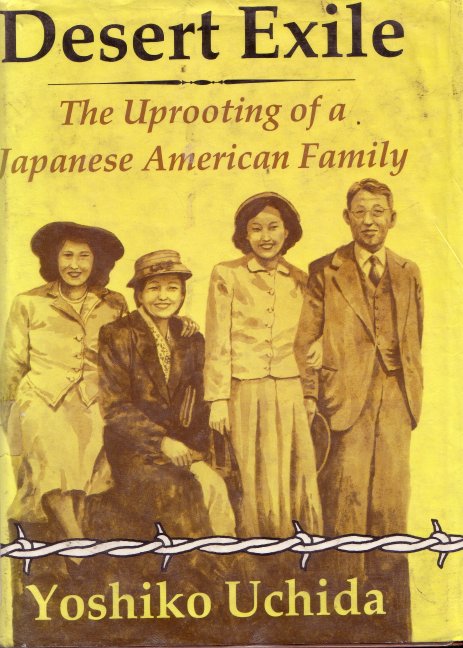
Desert Exile: The Uprooting of a Japanese American Family

Yoshiko Uchida, 1982
The author originally grew up in Berkeley, California. She starts off writing about her life there and gives some of her family history. She also has her own share of tragedies; one cousin died in Japan during the war; one died at Heart Mountain due to a heart condition, and an uncle became blind due to inadequate care while he was at one of the interment camps.
She continues with personal memories of her education in the U.S. and how she, as a Nisei, felt she wasn't really fully Japanese and wasn't really fully American, either. The day Pearl Harbor was attacked her father was taken by the FBI. There's a lot of very personal details of what was happening, including the fact that the parents of a friend of hers were shot and killed by an anti-Japanese fanatic.
She and the rest of her family were subject to evacuation and she tells the story of how they had to get rid of things, including even giving their pet collie away. They were shipped to the Tanforan Assembly Center. She describes the living conditions there, including the horse stalls they lived in, latrines with no privacy, etc. She also described the type of life her father had where he was being held, and these details are something few if any other books have.
She describes more details about life at Tanforan, including the activities, classes, the setting up of the post office, etc. As with the other evacuees she and her family were moved to a relocation center, in their case Topaz. They even had a sheet of instructions to follow on what words to use in Topaz (reminding me of an episode of The Prisoner with similar sayings), including to use the word Safety Council, instead of Internal Police, and Residents instead of Evacuees.
It's also obvious from what she writes that Topaz was not at all ready for use when the evacuees got there. Many buildings were not even finished being built, the laundry lacked water and lights didn't work. She writes about how elementary schools were supposed to start but nothing was there except an empty building. She also visited a white teacher at her staff lodgings and found out that the staff were in much, much more comfortable buildings than the internees.
Although the schools finally did get started they had to close in November due to the fact that they weren't actually finished and so terrible cold kept getting in to the schoolrooms. She also writes about the increasing tensions and bitterness in the camp and how this affected the way people behaved.
She finally did get to leave the camp and continue her education outside.
This is a very personal book and extremely good, giving a lot of good in-depth insight into what was actually happening at the assembly centers and internment camps. Definitely worth reading.
Main Index
Japan main page
Japanese-American Internment Camps index page
Japan and World War II index page
|